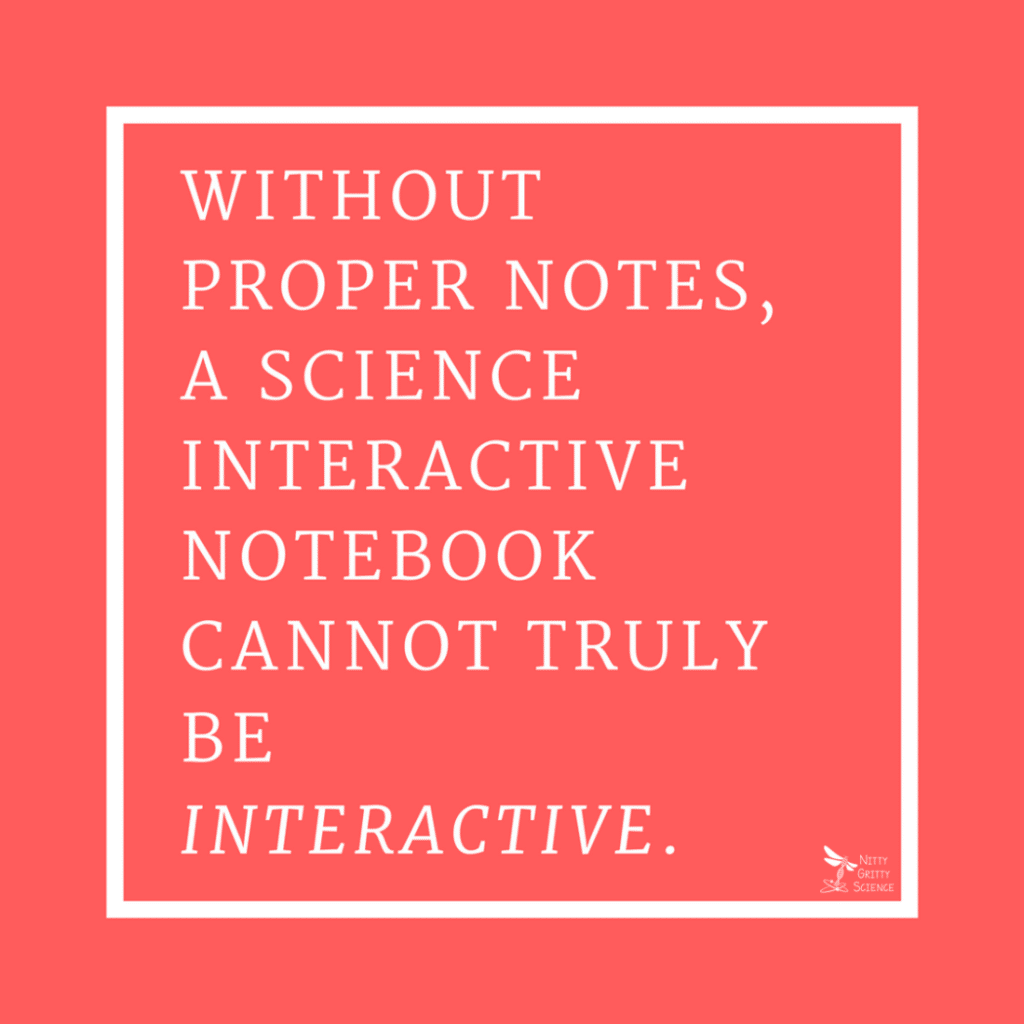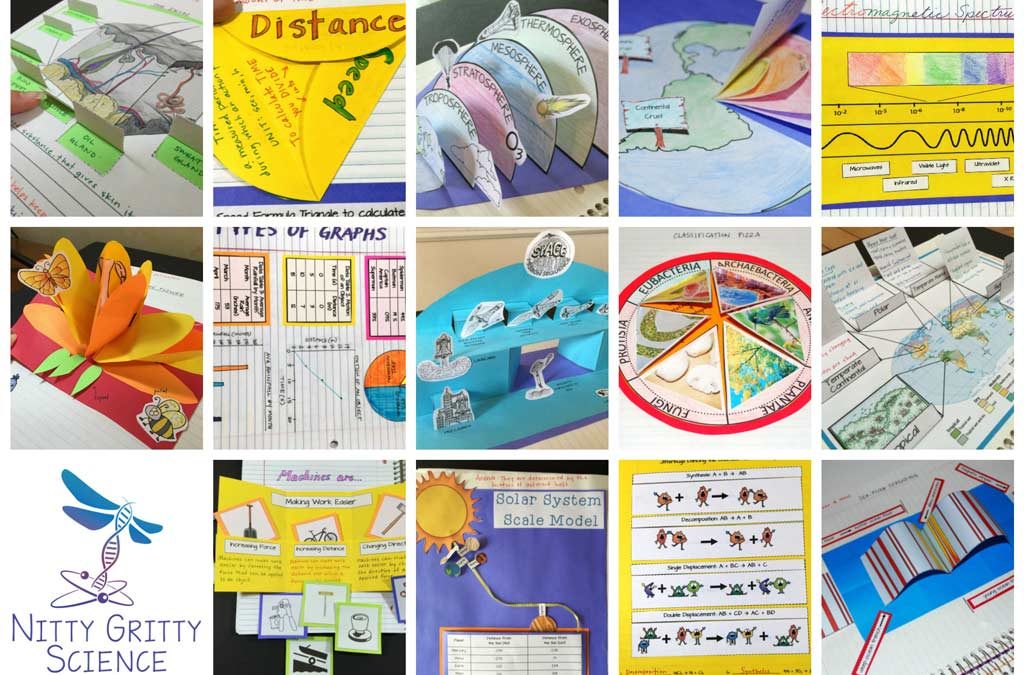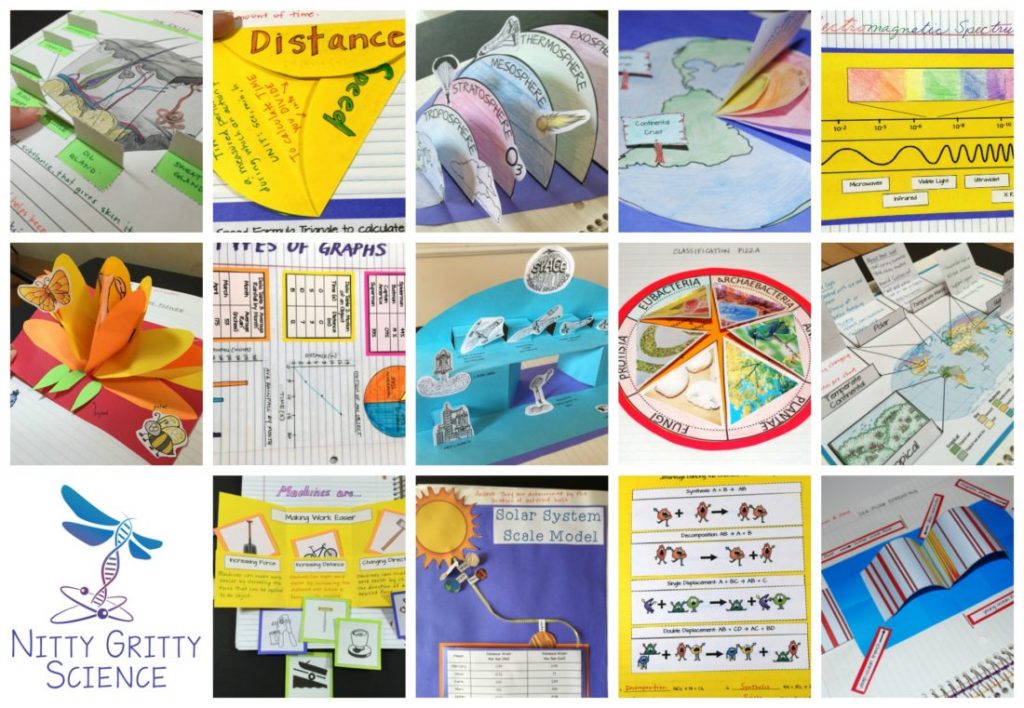How many times have you heard your students say, “I forget what we did yesterday!”, or “I can’t find my notes!”? Probably more times than you wish. Students are frequently unprepared and unorganized. It’s a fact. How can we fix this problem? The solution – have all of your notes and activities i n ONE spot! Everything! All together!
n ONE spot! Everything! All together!
Interactive notebooks are the perfect solution for your students. My specialty is science. I live and breathe science. Therefore, I have designed and created the most interactive, helpful and differentiated Science Interactive Notebook for YOUR science class, whether it be Earth Science, Life Science or Physical Science.
For a science class, the Science Interactive Notebook can act as a student’s personal science textbook. It will include all vocabulary words, essential questions pertaining to the specific unit of study, images, illustrations, observations, recordings, processes, and beyond! If you haven’t already, make sure to grab my FREE Intro to Science Interactive Notebooks for setup and design.
What makes Science Interactive Notebooks interactive?
When you open a notebook in general, you see two sides, a left side, and a right side. My Science Interactive Notebooks are no different. They have two sides, with each side having a specific role.
The Right (Teacher Input) Side: The right side of my Science Interactive Notebook are designed to contain all notes from the teacher, hence the teacher-input side. All notes are included for my Science Interactive Notebook and are chunked into manageable sections. The notes can be presented as a lecture, a PowerPoint presentation (also available in my store), or a handout. Read about how I differentiate my editable notes here.
Without proper notes, a Science Interactive Notebook cannot truly be interactive. For a Science Interactive Notebook to be truly “interactive,” students must interact with their notes in order to successfully complete the output activity. This challenges students’ to apply the new information they’ve just learned immediately.
 At the top of the notes page, I always include the QOD or the question of the day. This question explains WHY they are doing this lesson, or what they are trying to solve or figure out, by learning this lesson. Upon completion of notes and activities, they will have a solution to that day’s essential question.
At the top of the notes page, I always include the QOD or the question of the day. This question explains WHY they are doing this lesson, or what they are trying to solve or figure out, by learning this lesson. Upon completion of notes and activities, they will have a solution to that day’s essential question.
The Left (Student Output) Side: When I began creating activities for my student output pages, I began with what I was taught about interactive notebooks and using the skills from the Bloom’s Taxonomy wheel that my activities touch upon include application, analysis, synthesis, and evaluation. These activities included:
- Concept maps
- Writing prompts
- Drawings/Illustrations
- Vocabulary words/definitions
- Venn Diagrams
- Graphs/Charts
All of the above have benefits, but soon found that there was a small problem with using just these basic interactive notebook activities – they were not challenging the creativity of my students and were definitely not meeting all the needs of my different-styled learners. What I thought to myself was, “Can I make my Science Interactive Notebooks serve a better purpose for ALL students, all while they are having fun and staying engaged?” The answer – ABSOLUTELY!
Science Interactive Notebooks for ALL types of learners
In case you’re unsure, the multiple learning styles of students include:
- Verbal/Linguistic – Writing, reading, memorizing dates, thinking in words, telling stories
- Mathematical/Logical – Math, logic, problem-solving, reasoning, patterns
- Visual/Spatial – Maps, reading charts, drawing, mazes, puzzles, imagining things, visualization
- Bodily/Kinesthetic – Athletics, dancing, crafts, using tools, acting
- Musical – Picking up sounds, remembering melodies, rhythms, singing
- Naturalistic – Understanding nature, making distinctions, identifying flora and fauna
The learning styles summarize learning preferences and strengths of students, so it only makes sense that if I want my students to be successful, I have to design activities around them. One style does NOT fit all, and I feel that is what many interactive notebooks today lack.
My activities that I create for all of my science notebooks are original and are never the same. Students truly stay engaged because I’ve carefully selected student output activities that not only promote certain learning styles but also mesh with the science subject that is the focus of study. Check some examples out below:
Overall, I pride myself on making my science interactive notebooks different than the rest. My interactive notebooks will reach ALL learners in a multitude of ways, and not just by utilizing the standard foldable and template. I hope you find my notebooks a valuable addition to your science class and that your students find much success! Interested in learning more? Click images below to see what each Science Interactive Notebook has to offer:
Enjoy,
Erica
Looking for experiments for your young scientists? Check out my book here:




